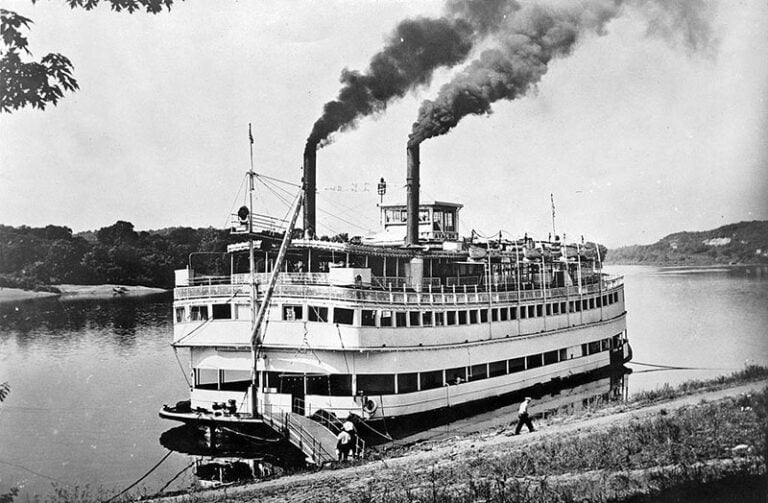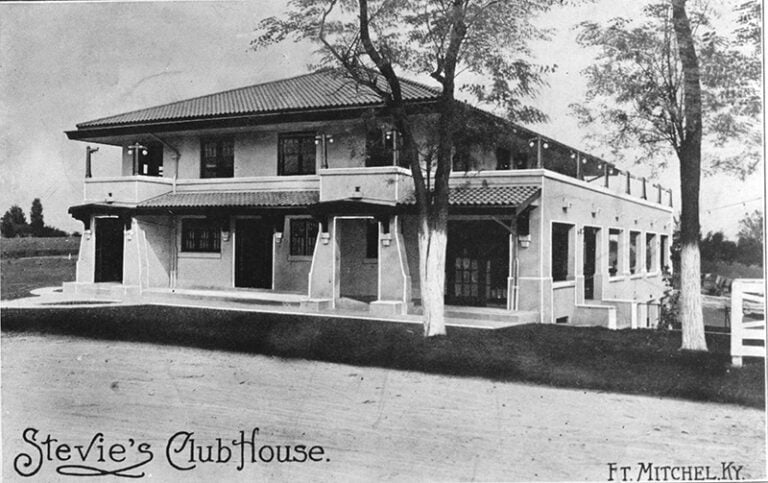The Wood Thrush (Hylocichla mustelina) is a conspicuous summer resident across Kentucky.
This forest-nesting bird was likely more numerous during pre-settlement times, before vast forest fragmentation. In recent decades this distinctively-marked songbird has been observed in almost every county, but is less common in the Inner Bluegrass Region, and areas where there are only narrow strips of timber or small woodlots.

Population declines may also be in part due to increased nest parasitism by the Brown-Headed Cowbird, which in high in many parts of the state, according to The Kentucky Breeding Bird Atlas. The female cowbird lays eggs in the nest of a Wood Thrush pair, who raise the cowbird young, often at the expense of their own young.
The Wood Thrush is a member of family Turdidae, which has 175 species worldwide. The species was first identified in the scientific literature in 1789 by German naturalist Johann Friedrich Gmelin.
The adult Wood Thrush stands 7.1 to 8.5 inches tall, with a wingspan of 12 to 16 inches, and weighs 1.7 to 2.5 ounces.
The longest known lifespan for a wood thrush in the wild is 10 years, 2 months, when a male bird was recaptured and re-released during banding operations in Connecticut in 2010. He was banded there in 2002.
Coloration of the crown, nape, and upper back are cinnamon-brown, while the lower back, wings, and tail are a slightly duller brown. The breast and belly are white with large dark brown spots.
Its eyes are dark with white eye rings, and its legs are pinkish.
Juvenile birds look similar to adults, but have additional spots on the back, neck, and wing coverts, the feathers covering the bases of the wing quills. The male and female are similar in size and plumage.
Birdwatchers often confuse the Wood Thrush with the slightly larger Brown Thrasher (Toxostoma rufum), who has black and white specks on its wings.
The song of the Wood Thrush is a melodic “ee-oh-lay.”

Range and Distribution
In the Lower 48 states, the range of the Wood Thrush extends from the Dakotas, south to east Texas, east along the Gulf Coast to northern Florida, north up the Atlantic Coast to Maine, and west through the Great Lakes states to Minnesota.
Birds that nest in Kentucky winter in southern Mexico and Central America, returning in late April.
Food Habits
The Wood Thrush feeds mostly on invertebrates in the leaf litter and fruits from shrubs.
Their summer diet is predominantly invertebrates, including adult beetles, flies, caterpillars, spiders, millipedes, woodlice, and ants. Insects, snails, and salamanders found in trees are occasional prey.
Fruits such as spicebush, grape, holly, elderberry, jack-in-the-pulpit, Virginia creeper, pokeweed, dogwood, black cherry, and black gum make up the rest of their diet.
Parents feed chicks soft invertebrates and pre-softened fruits.
In late summer and fall, after breeding season, the Wood Thrush shifts its diet toward fruits in preparation for the energy demands of migration. Fruits remain an important food during migration and during the winter.
Courtship and Nesting
Wood Thrushes are solitary, but sometimes form mixed-species flocks.

The Wood Thrush defends a territory that ranges in size from 800 to 28,000 square yards. A monogamous bird, its breeding season begins in late April in Kentucky. About half of all mated pairs raise two broods, ranging in size from two to four chicks. Nesting can often extend into August.
Their nests are typically built in the crotch or fork of a tree or shrub, on average about 10 feet off the ground. The female builds the nest from dead grass, leaves, and stems, lining it with mud and a layer of rootlets. Her eggs are turquoise-green with no markings. The incubation period is 12 to 15 days, and the chicks (nestlings) stay in the nest for an additional 12 to 15 days.
The Wood Thrush is a distinctively-marked bird so you will know one when you see one. But you will have to search the woodlands to find one. They’re not likely to show up in a suburban backyard.


















